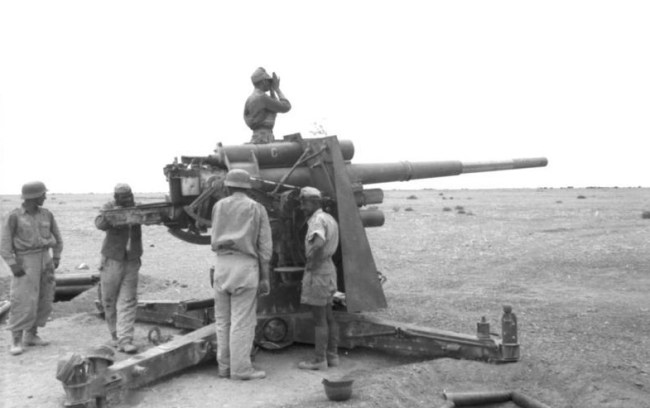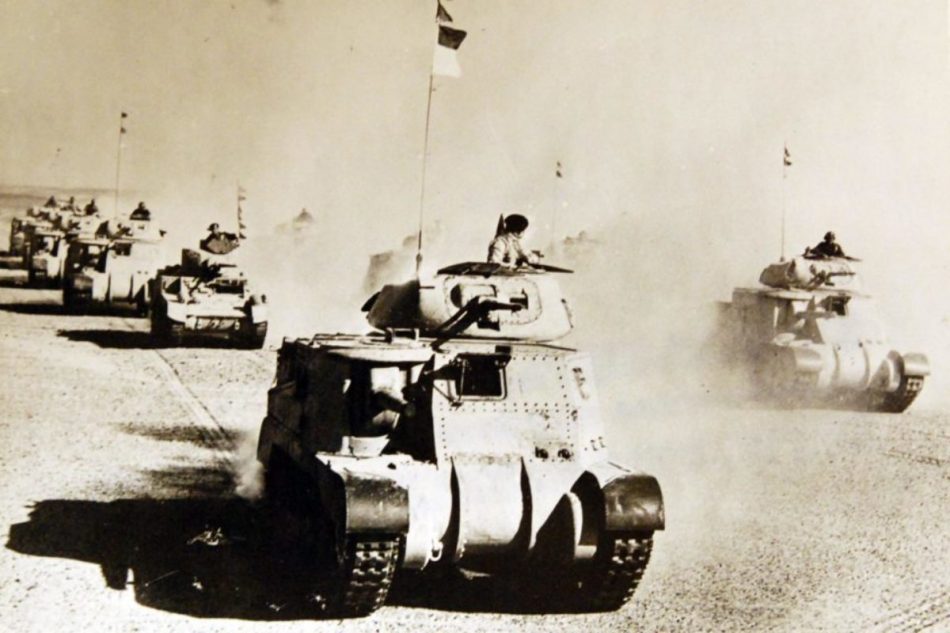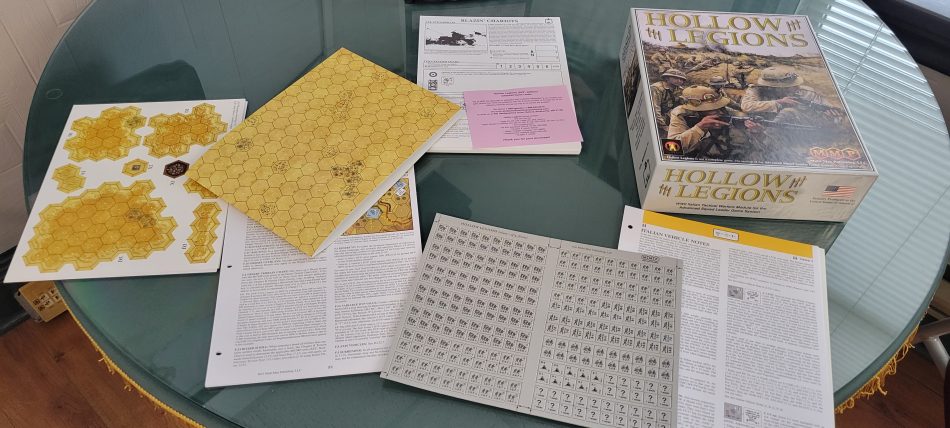The Desert War of Advanced Squad Leader
By David Garvin
From the 10th of June 1940 until the 13th of May 1943, Axis and Allied armies struggled against one another across North Africa until the Axis surrendered 275,000 prisoners of war. Many of us know of many of the battles and famed figures of the war. Kasserine. El Alamain. Tobruk. Rommel. Montgomery.
They all evoke images of the hot, dusty sand and the sweeping tank battles across the desert. There are many games that depict battles in North Africa, but few do it at the tactical level. After how, how does one maneuver over a barren landscape bereft of cover? Well, the folks at Avalon Hill came up with a way to do this with their Advanced Squad Leader (ASL) series.
So that’s what I’m going to discuss: how tactical desert warfare is gamed using ASL and some of the implications of fighting in the desert. Finally, I will discuss how Multi-Man Publications have brought the desert back to ASL after 34 years.
In 1988, Avalon Hill released its 5th module for ASL, West of Alamein. The 4 previous modules dealt with war in Europe, from Stalingrad in the East to the Cherbourg Peninsula in the west. The grandfather of ASL – Squad Leader – never had plans to model desert warfare. As such, West of Alamein was a bold new direction for the ASL world and it proved to be a challenge to get some players to play it.
That said, it was a necessary component for the system, as it included the entire order of battle for the British Commonwealth. The Avalon Hill magazine, The General, as well as the ASL Annuals, released several scenarios involving British troops fighting on the continent. As such, players of ASL had no choice but to buy the module even if they were not going to try playing battles in the desert.

Fighting in the desert is quite different from most other fighting, save perhaps fighting on the Steppe. The ranges are incredibly long. The environment is a challenge to both sides and keeping your side fighting across a hazardous Sea is a logistical nightmare. But those are operational and strategic concerns, covered by games as diverse as Afrika Korps and The Campaign for North Africa. For the ASL player, however, the concern is less about the transit lines from the UK or from Germany, but rather how to achieve the victory conditions for the scenario on hand.
In terms of the game itself, the desert differs from the other theaters in terms of terrain and climatic conditions. Talking specifically about the terrain, to believe that it is featureless would be a grave error. There is scrub, there are hidden wadis, and most challenging perhaps are the deirs, which are small depressions in the terrain that can offer a bit of rare cover for soldiers under fire. The converse of a deir could be the hillock. In terms of ASL, it is essentially a small rise in the terrain that offers a marked advantage for the unit that occupies it.
Desert Rats occupy a deirIn terms of climatic conditions, the game plays out the unique climatic effects of the desert in a clever way. Sun Blindness is possible in the early morning and evening. Fighting into the sun is not advised! During the noon hours, however, heat haze and intense heat haze will affect both sides equally. Even close air support is adversely affected in such conditions. Finally, dust will affect the game as well. I’m sure we’ve all seen it. A tank rides across the desert and plumes of dust follow it.
The game models that. Having been in Afghanistan, I have personally experienced dust storms. They can be sudden, they can be persistent and they adversely affected everyone’s ability to do anything. The game models that as well with dust ranging from light dust to extremely heavy dust. When you have these conditions, you’ll be lucky to the hit the broad side of a barn!

In spite of the varying terrain, the fact remains that long-range attacks are the norm in the desert. Certain guns had a marked advantage. None was more feared – rightly or wrongly – than the German 88. The FlaK 18 and FlaK 36 are – in game terms – indistinguishable. In the game, they are classified as an 88L. The 88 refers to its caliber and the “L” denotes that, in game terms, it has a long barrel. This means that it has a higher muzzle velocity and consequently a higher accuracy at longer ranges. Assuming there is a target at longer ranges and the effects of the climate are such that there are no other factors, let us have a look at how the range will affect various weapons of similar caliber but varying barrel lengths.
German PaK 38 in a SangarWithout going into great detail, but only to illustrate the point, let us assume that the target is a vehicle of average size and is at 40 hexes distant. The firing gun is 75mm but will vary between short-barreled, average-barreled, long and double-long. The base to hit value at that range is a 5, assuming black to hit numbers. If we have a * weapon, that is, a short-barreled weapon, that to hit number is modified by -1, meaning a 4 is needed to hit on a Dice Roll (DR) of 2d6.
The average-sized barrel has no modifier, but the L weapon is modified by a DRM of +1, meaning that a 6 is needed. A LL gun is modified by a DRM of +2, netting a 7 as the base to hit. Adding factors such as acquisition, bore-sighting or having an armor leader can make your poor odds good, or your good odds great. The lesson is this: in the desert, you must respect the L and the LL guns.
So, the game came out in 1988 and it was played, off and on, and admittedly was not and remains not the most popular theater for ASL. To illustrate, the ASL Remote On-Line Automated Record (ROAR) shows a net total of 650 recorded playings of the scenarios in West of Alamein. Compare this to the 1,180 recorded playing of the scenarios from Yanks, released just a year before West of Alamein, one can easily see that it just doesn’t have the appeal. Paratrooper is even more popular, with over 1,800 playings! But I must caution the reader that the numbers don’t tell the whole story. Part of the reason people play certain war games is because of their historical appeal.
For me, I play many Eastern front battles. I will also focus on battles that involve my regiment, The Royal Canadian Regiment. Let’s face it, for many people, when you mention “the War”, people will almost invariably think of places such as Normandy or Bastonge or even Arnhem. Even though El Alamein is fairly well known by students of history, the actual details of the war in the desert itself remain a mystery. It is likely for these reasons – and more – that the desert in ASL remains a bit of a mystery as well.
Don’t mention the WarAll this to say: the desert is back! Just two days ago, I received in the mail my copy of Hollow Legions. It is a re-issue of the module that introduced the Italians to the ASL world, but it is more than that. It has the desert rules in the form of Chapter F and all the additional components to complete the desert experience, including some much-improved overlays.
Now, I’m not alone in receiving this latest product for ASL. This went out on P500 about a year or so ago and MMP needed 825 to get this out on the street. As of 11 Jan 2022, 1,637 units have been sold! It may be too late to get the pre-order price, but one thing is for certain: the desert is back! The initial reviews of the module have all been positive, especially the inclusion of rules for both Ethiopian and Eritrean soldiers. Oh, and there are 54 scenarios!

So, there it is. A desert battle in ASL is a unique experience, even in the diverse gaming experience that it can offer. Tactics that work in the Pacific or even in Western Europe may not work well in the desert. There is more in common with the fighting on the Steppe than there is even in Sicily! In fact, there are special rules that allow a player to use desert boards as steppe. So beware of the rising sun as it may cause sun blindness, but if you wait too long, the high sun may cause intense heat haze. You might get lucky and the weather will cool, allowing for some extremely heavy dust. It may be challenging, but one this is for certain; fighting in the desert is always fun in ASL.
David Garvin is an ASL player who has first-hand experience with heavy dust. He doesn’t recommend it.
